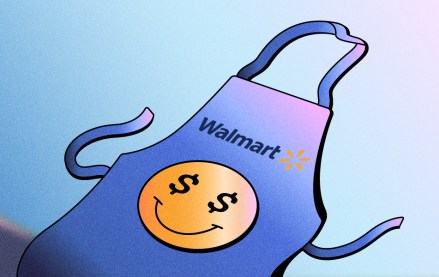Register by Jan 13 to save on passes and connect with marketers from Uber, Bose and more
‘The market didn’t need more of the same’: Media.net’s CRO on how SSPs are evolving

Let’s be honest: the world didn’t need another SSP.
The market has been crowded for several years, and while buyers already had a plethora of options, Media.net chose to launch its SSP five years ago. This was not a delay as much as it was a strategic decision to better address marketers’ ongoing challenges, including cluttered supply paths, plateauing performance and a lack of transparency.
“Our roundtable session at the Digiday Programmatic Marketing Summit reaffirmed the same belief that guided us when we launched our SSP: the market didn’t need more of the same — it needed something different,” said Ken Lagana, global Chief Revenue Officer at Media.net. “We weren’t chasing market share; we were building toward a gap we knew we could uniquely fill.
“What we’ve learned is that buyers don’t need more noise,” he said. “They need more value, more clarity, more control. Sometimes, launching late is the best way to build something that lasts.”
In this Q&A with Lagana, the conversation focuses on the lessons learned that continue to shape Media.net’s SSP and why so many marketers still feel like platforms lack the fundamentals.
In a crowded marketplace, what kind of differentiation are marketers looking for from SSPs?
Ken Lagana: Differentiation matters more than ever. Most SSPs say the same things: scale, efficiency, transparency. Buyers tune it out.
We realized the only way to stand out was to offer something others couldn’t. For us, that meant leveraging our unique contextual and search intent signals — data we’ve been refining for nearly two decades. When layered together, those signals fuel better targeting and stronger performance, even in a post-cookie world.
Expanding on that, we tap into live search data and intent signals from across our search engine and publisher partners, allowing marketers to reach audiences based on what they’re actively researching, not just past behaviors.
Ultimately, marketers don’t need another access point. They need an edge. That starts with data they can’t get elsewhere.
Transparency is a word everyone uses, but what does it really mean to marketers, and how should platforms deliver on it?
Ken Lagana: Transparency is non-negotiable, and it needs proof. Today, every SSP claims to be transparent. But marketers want transparency that they can verify.
That means no made-for-advertising sites. It means curated supply. It means visibility into how impressions are priced and why they were delivered in the first place. If you can’t show that, you’re just another black box with better branding.
We built our SSP with transparency as a default, not an add-on. Buyers can trace outcomes, assess inventory quality and optimize with confidence. That’s not a feature. It’s a baseline expectation.
Curation has become a hot topic. What are buyers asking for when they talk about curated supply?
Ken Lagana: Curation isn’t a buzzword — it’s survival. The open web has a perception problem, but it’s not inherently broken — it’s just been poorly managed.
Marketers tell us they want scale, but they also want control. They don’t want to spray and pray across 20,000 sites. They want curated pathways that align with brand safety, relevance and performance goals.
We embraced that tension. Our approach to curation isn’t one-size-fits-all. It flexes based on vertical, audience and campaign strategy because the most valuable inventory differs for every brand.
How do SSPs fit into an omnichannel strategy?
Ken Lagana: Omnichannel isn’t really optional anymore. A modern SSP has to go beyond display, period.
Buyers expect to reach audiences wherever they are — across CTV, digital OOH, mobile, desktop and audio — with unified targeting and reporting. They don’t want to Frankenstein together five separate platforms and pray it works.
That’s why we built ours to be omnichannel from the start. When you launch late, you don’t have legacy baggage — you can build for where the market is headed, not where it’s been.
Our Deals Desk solution is a good example of that. It allows buyers to quickly activate omnichannel campaigns with the ability to request custom Deal IDs, integrate first- and third-party data, and plug in our contextual search intelligence across channels. That has proven to be really powerful for our customers and partners.
There’s been renewed interest in contextual targeting, but how does it deliver performance at scale?
Ken Lagana: Contextual plus performance is the future. There was a time when contextual sounded like code for lower performance. That’s not true anymore. For example, a recent DoubleVerify survey of consumers found that 44% have tried a new brand due to seeing a relevant ad alongside a piece of content they were consuming.
Similarly, we’ve found that when contextual signals are enhanced with real search intent, they deliver. Marketers see stronger engagement, higher ROI and less reliance on identity-based targeting. That’s a big deal as cookies go away and privacy takes center stage.
It’s not either/or. It’s both, and the combination is powerful.
How do you see expectations for AI changing, and what role does AI play in your platform?
Ken Lagana: AI isn’t magic — it needs to be explainable. AI is everywhere now, and everyone’s claiming it. But most buyers don’t want a mysterious algorithm making decisions behind the scenes. They want to understand why something happened and how they can adjust it.
We made explainability a core principle. From optimization logic to inventory scoring, our platform is designed to surface the why behind the outcome. Because trust isn’t earned with buzzwords, it’s earned with clarity.
Sponsored by Media.net
More from Digiday

Inside the brand and agency scramble for first-party data in the AI era
Brands are moving faster to own first-party data as AI and privacy changes alter the digital advertising landscape.

Future starts to sharpen its AI search visibility playbook
Future is boosting AI search citations and mentions with a tool called Future Optic, and offering the product to branded content clients.

Walmart Connect takes a play out of the Amazon playbook to make agentic AI the next battleground in retail media
The next retail media war is between Walmart Connect’s Sparky and Amazon’s Rufus, driven by agentic AI and first-party data.








